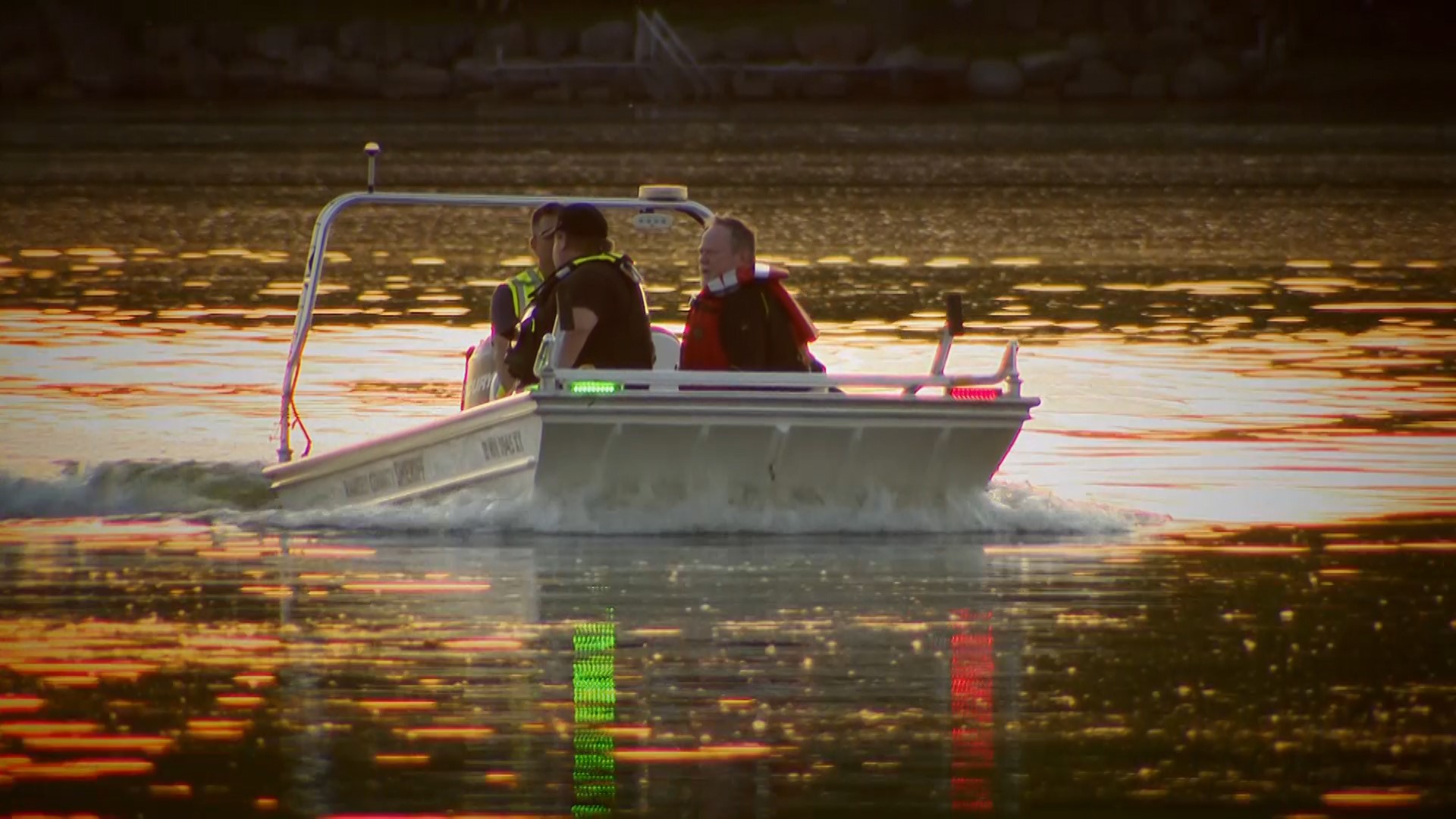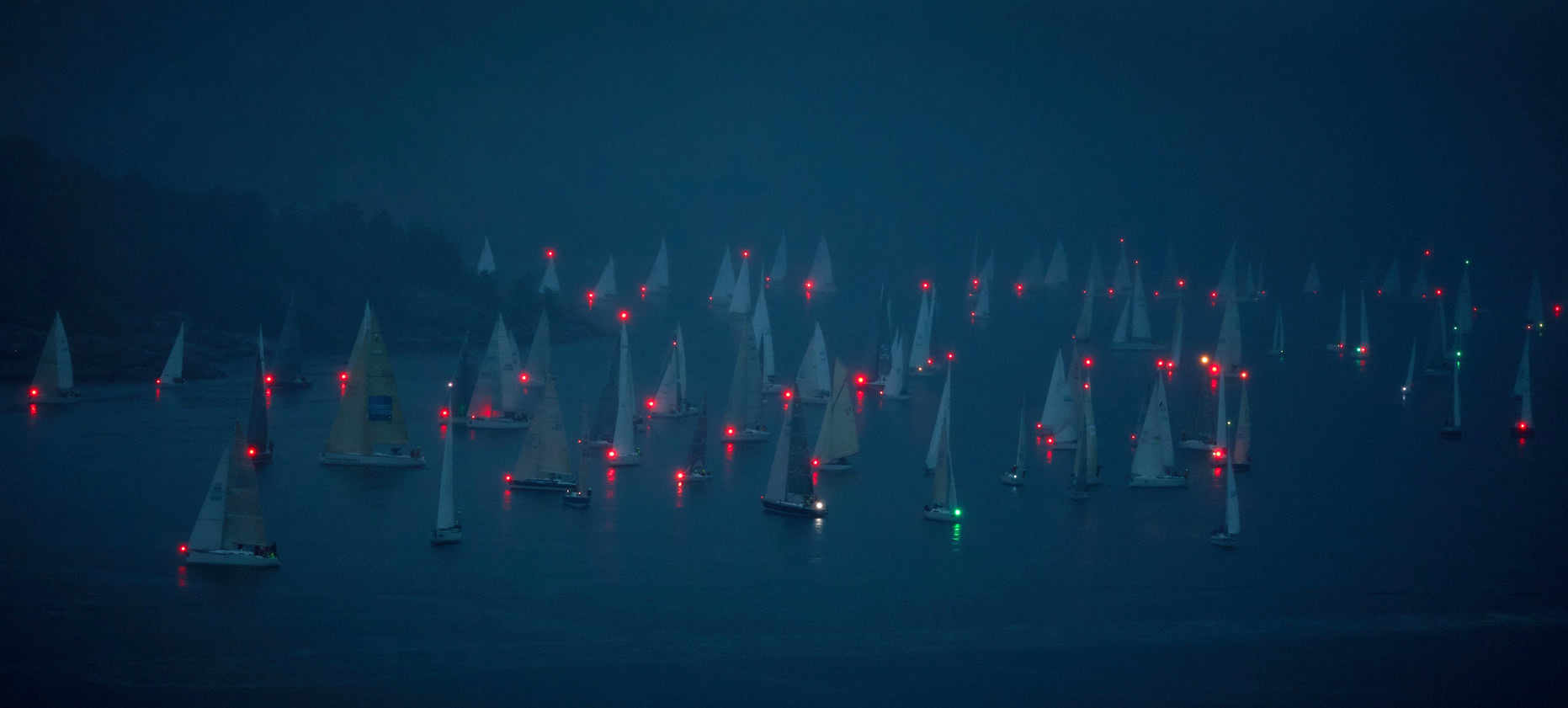Navigation lights required on a boat include red and green sidelights, a white stern light, and an all-around white light. Adequate navigation lights are crucial for safe boating, ensuring visibility and avoiding collisions while operating at night or in reduced visibility conditions.
They are necessary to comply with maritime regulations and to help other vessels determine the direction and size of a boat, whether it is anchored, underway, or stopped.

Credit: www.kare11.com
Importance Of Navigation Lights
Enhancing Safety During Night-Time Navigation
When it comes to boating, safety should always be a top priority, especially when navigating in the dark. That’s where navigation lights come into play. These lights are not just a decorative addition to your boat; they serve a crucial purpose in ensuring the safety of yourself and others on the water.
Let’s explore the importance of navigation lights and why they are required on boats.
- Navigation lights enhance safety during night-time navigation by:
- Providing visibility: Navigation lights illuminate your boat, making it easier for other boaters to see you. This is especially important in low-light or foggy conditions when visual cues may be limited.
- Signaling your presence: By having your navigation lights turned on, you’re signaling your presence to other boaters. This helps prevent collisions and accidents on the water, ensuring everyone remains safe.
- Indicating your direction: Different navigation light configurations indicate the direction in which your boat is moving. This information is crucial in preventing misunderstandings and potential collisions.
- Guiding your path: Navigation lights help you navigate through channels, harbors, and other waterways with ease. They provide essential visual cues to keep you on the right path and avoid potential hazards.
Navigating without proper lights can lead to accidents, fines, or even legal consequences. It is vital to understand and adhere to the requirements for navigation lights to ensure safe boating practices.
Signaling Your Position And Intentions To Other Boaters
When operating a boat, it’s essential to communicate your position and intentions to other boaters around you. Navigation lights play a significant role in this aspect by providing clear signals that can be easily understood.
- Navigation lights signal your position and intentions by:
- Identifying your vessel type: Different types of boats are required to display specific light configurations. By adhering to these regulations, other boaters can quickly identify your vessel type and understand how to interact with it.
- Communicating your maneuvers: Navigation lights indicate when you are turning, changing course, or stopping. These signals allow other boaters to anticipate your movements and take appropriate action, reducing the risk of collisions.
- Indicating your size and speed: Larger vessels often have different light configurations than smaller ones, highlighting their size and speed. This information helps other boaters gauge the maneuverability and potential limitations of your boat.
Ensuring that your navigation lights are functioning properly and using them effectively helps promote a culture of safety on the water. By signaling your position and intentions, you contribute to a harmonious and incident-free boating experience.
Avoiding Collisions And Accidents On The Water
One of the primary reasons navigation lights are required on boats is to prevent collisions and accidents on the water. Being able to see and be seen is crucial for maintaining a safe boating environment.
- Navigation lights help avoid collisions and accidents by:
- Increasing visibility: Properly lit boats are easier to spot, allowing other boaters to take appropriate action to avoid potential collisions.
- Providing consistent signals: Navigation lights follow specific patterns, ensuring consistent and understandable signals for all boaters. This uniformity helps reduce confusion and enhances overall safety.
- Compliance with regulations: By adhering to the requirements for navigation lights, you contribute to a safer boating community. Everyone operating their boats with the necessary lights prevents unwarranted surprises and promotes responsible boating behavior.
It’s important to remember that navigation lights are not optional accessories but mandatory safety equipment. They serve as a visual language on the water, allowing boaters to navigate peacefully and with confidence. By understanding the importance of navigation lights and using them correctly, you play a crucial role in preventing accidents and ensuring a pleasant boating experience for all.
Types Of Navigation Lights
Distinct Lights For Different Types And Sizes Of Boats
When it comes to boating safety, proper navigation lighting plays a vital role in ensuring the visibility of a vessel, especially at night or during low visibility conditions. Different types and sizes of boats have specific requirements for navigation lights.
Let’s explore the various types of navigation lights you need to be aware of:
- Sidelights: Also known as running lights, sidelights are typically red and green lights located on the bow or front corners of a boat. These lights allow other boaters to determine the direction in which the vessel is traveling. A green sidelight is positioned on the starboard (right) side, while a red sidelight is positioned on the port (left) side.
- Sternlight: The sternlight is a white light mounted at the rear or stern of a boat. It helps other boaters identify the presence and position of your vessel, especially when approaching from behind.
- Masthead light: This white light is positioned on top of the vessel’s mast or highest structure. It is visible from both the front and back of the boat and is used to indicate the presence of a vessel in darker conditions. The masthead light should be displayed in addition to the sidelights.
- All-round white light: For certain vessels, an all-round white light is used instead of separate sidelights and sternlights. This light can be mounted on the highest point of the boat and must provide visibility from 360 degrees.
Required Navigation Lights For Recreational Vessels
If you own a recreational boat, there are essential navigation lights that you must have to comply with boating regulations. These lights include:
- Bow lights: Recreational vessels measuring less than 12 meters (39.4 feet) are required to display red and green sidelights on the bow. The lights should be visible at a distance of at least one nautical mile.
- Stern light: A recreational boat must also have a white sternlight visible at a distance of at least two nautical miles. This light should be displayed at the boat’s stern or mounted higher if possible.
Additional Lights For Commercial And Larger Vessels
Commercial and larger vessels have additional requirements when it comes to navigation lights. These additional lights include:
- Towing light: If your vessel is towing another boat or object, you need to display a yellow towing light above the sternlight. This light warns other boaters about the presence of a towed object.
- Anchor light: When a vessel is at anchor, it must display an anchor light. This light is a white, all-round light visible for at least two nautical miles and helps other boaters identify an anchored vessel.
- Fishing light: Some larger fishing vessels may also require specialized lights, such as lights to attract fish or lights to indicate nets or gear in the water. These lights help improve safety and awareness for both the fishing vessel and other boaters in the area.
Knowing the specific navigation light requirements for your boat is crucial for ensuring the safety of everyone on the water. Familiarize yourself with these regulations and always have the appropriate lights installed and functioning properly. By adhering to these guidelines, you can navigate the waters with confidence, keeping yourself and others safe.
Compliance With Navigation Lighting Regulations
Understanding The Regulations And Requirements
Navigating a boat safely is not only crucial for the well-being of those on board but also essential for the overall safety of the waterways. One fundamental aspect of boat navigation is ensuring that the vessel is equipped with the appropriate navigation lights.
These lights play a vital role in indicating the boat’s position, direction of travel, and presence to other vessels. Whether you’re a seasoned sailor or a newbie on the waters, it’s essential to understand the regulations and requirements for navigation lights to comply with the law and ensure a safe voyage.
Here are the key points to keep in mind regarding navigation lighting regulations:
- Each vessel must have specific navigation lights that comply with the standards set by the maritime authorities. These regulations vary depending on the type and size of the boat, as well as the navigational area in which it operates.
- It’s essential to familiarize yourself with the specific regulations that apply to your vessel. This information can typically be found in the boating regulations provided by your country’s coast guard or maritime authority. Be sure to stay updated with any amendments or changes to these regulations.
- Following the regulations not only ensures compliance but also enhances visibility, making it easier for other boaters to see and interpret your vessel’s movements. This is crucial for preventing collisions, especially in low visibility conditions or at night.
- Compliance with navigation lighting regulations is not limited to having the correct lights on board; it also includes maintaining and using them correctly. Regularly check and test your navigation lights to ensure they are in proper working condition before each voyage.
- Remember, navigation lights are intended to communicate your vessel’s position and movements to others, so it’s important to use them appropriately. Avoid directing your lights in a way that may confuse or mislead other boaters.
Placement And Visibility Of Navigation Lights
Understanding the regulations is one step, but another important aspect is the placement and visibility of navigation lights on your boat. Proper positioning and visibility ensure that other vessels can easily identify your boat’s orientation and course.
Consider the following points when positioning your navigation lights:
- The location of the navigation lights should be such that they provide the best visibility in all directions without obstruction. Place them as high as practical to improve their range and reduce the chances of being blocked by onboard obstructions.
- The distance between the lights should meet the requirements specified in the regulations. This distance varies depending on the boat’s length and the type of navigation lights used.
- Take into account the potential shadowing effect caused by structures or equipment on your boat, which could obstruct the lights’ visibility to other boaters. Make sure the placement avoids any hindrances that might obscure the lights’ emission.
- When positioning navigation lights, consider the angle at which they should be visible from other vessels. The correct angle allows approaching boats to easily determine your vessel’s direction, reducing the risk of confusion or misinterpretation.
Choosing The Right Type Of Lights For Your Boat
Selecting the appropriate navigation lights for your boat is crucial to ensure compliance with regulations and enhance safety on the water. Here are a few key points to help you in choosing the right type of lights:
- Understand the specific requirements for your vessel, including the colors, mounting options, and range specified by the regulations. This information will guide you in selecting the appropriate lights that meet the necessary criteria.
- Consider the size and type of your boat when choosing navigation lights. Smaller vessels may require compact and low-profile lights, while larger boats may need more powerful and visible options for effective communication with other boaters.
- Led lights are becoming increasingly popular due to their energy efficiency, long lifespan, and enhanced visibility. Consider upgrading to led navigation lights if your current lights are outdated or need replacing.
- Ensure the lights you choose are certified and meet the required quality standards. Look for lights that are specifically designed for marine use and are resistant to harsh weather conditions, vibrations, and corrosion.
- Lastly, regularly inspect your navigation lights and replace any damaged or malfunctioning ones immediately. Proper maintenance ensures that your lights remain functional, reliable, and compliant with regulations.
Remember, by understanding and adhering to navigation lighting regulations, positioning and ensuring the visibility of your lights, and choosing the right type of lights for your boat, you are taking important steps towards maintaining the safety of yourself, your crew, and others on the water.
So, sail safely and enjoy your boating adventures!
Conclusion
Understanding the required navigation lights for a boat is crucial for boaters to ensure safety on the water. By adhering to the regulations set by the united states coast guard, boaters can effectively communicate their vessel’s position and intentions to other boaters, reducing the risk of collisions.
Moreover, proper navigation lights help boaters navigate safely in low visibility conditions, such as poor weather or at night. With a combination of red, green, and white lights, boaters can easily differentiate between other vessels and determine their direction of travel.
It is important to remember that navigation lights are not optional accessories but essential tools that every boater needs to operate their vessel legally and responsibly. By familiarizing oneself with these requirements, boaters can enjoy their time on the water with peace of mind, knowing that they are taking the necessary precautions for a safe boating experience.




